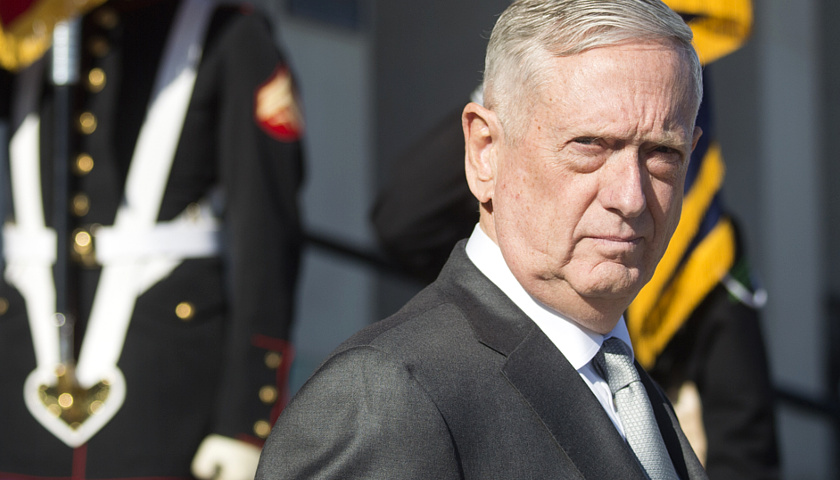The Trump administration is allowing troops stationed at the U.S.-Mexico border to engage in some law enforcement activities and, if necessary, use lethal force.
Defense Secretary Jim Mattis confirmed to reporters on Wednesday that he had received a Cabinet order signed by White House Chief of Staff John Kelly, not President Donald Trump, making engagement guidelines less restrictive.
“The president did see a need to back up the Border Patrol officers, and we received late last night an additional instruction authorizing us to implement additional measures. We’re sizing up what those are. We already talked with folks over at DHS Department of Homeland Security,” Mattis said.
He added that he wouldn’t take any action unless he heard from DHS.
“The secretary of homeland security has to ask me to do stuff. I now have the authority to do more. Now we’ll see what she asks me for,” Mattis said.
Minimal risk
The New York Times reported Wednesday that an internal DHS document said U.S. border guards faced a “minimal” risk of violence in encounters with migrants.
The Cabinet order that Mattis received, first reported by the Military Times, allows military personnel to perform activities that the secretary of defense “determines are reasonably necessary to protect border agents, including a show or use of force (including lethal force, where necessary), crowd control, temporary detention and cursory search.”
Mattis downplayed the order, however.
“I think part of this is just putting in the crowd-control barriers and the barbed wire. If there’s one thing you don’t want to walk through, any of us as human beings, it’s barbed wire. Even cows are smart enough to stay away from that stuff,” he said.
Allowing military personnel to take on law enforcement activities would most likely be challenged in court. The 1878 Posse Comitatus Act, in connection with the Insurrection Act of 1807, limits the federal government’s power to use military personnel to enforce domestic policies.
In an email to VOA, Hina Shamsi, director of the American Civil Liberties Union’s National Security Project, said the Cabinet order was an “unnecessary escalation of a political stunt that risks harm to civilians and legal jeopardy for the military. In addition to serious concerns about violation of the Posse Comitatus Act, it’s hard to see how John Kelly, a civilian White House official, has the authority to issue any such order.”
Most unarmed
But Mattis pointed out that most of the troops at the border aren’t even armed. “There’s no violation here at all. … We’ll stay strictly according to the law,” he said.
He also confirmed he has final say over the use of force by the military at the border. “The president has delegated that to me. Yes,” he added.
Trump has so far deployed about 5,800 active-duty service members to the border, along with 2,100 National Guard troops.
Mattis also told reporters some military personnel could “certainly” be home for the holidays.
“So as long as DHS doesn’t assign us more missions to lay more wire, which they could, then we could anticipate they’d be home,” he said. “I would anticipate they would be, but some troops may not be, or some new troops may be assigned to new missions. This is a dynamic situation.”




